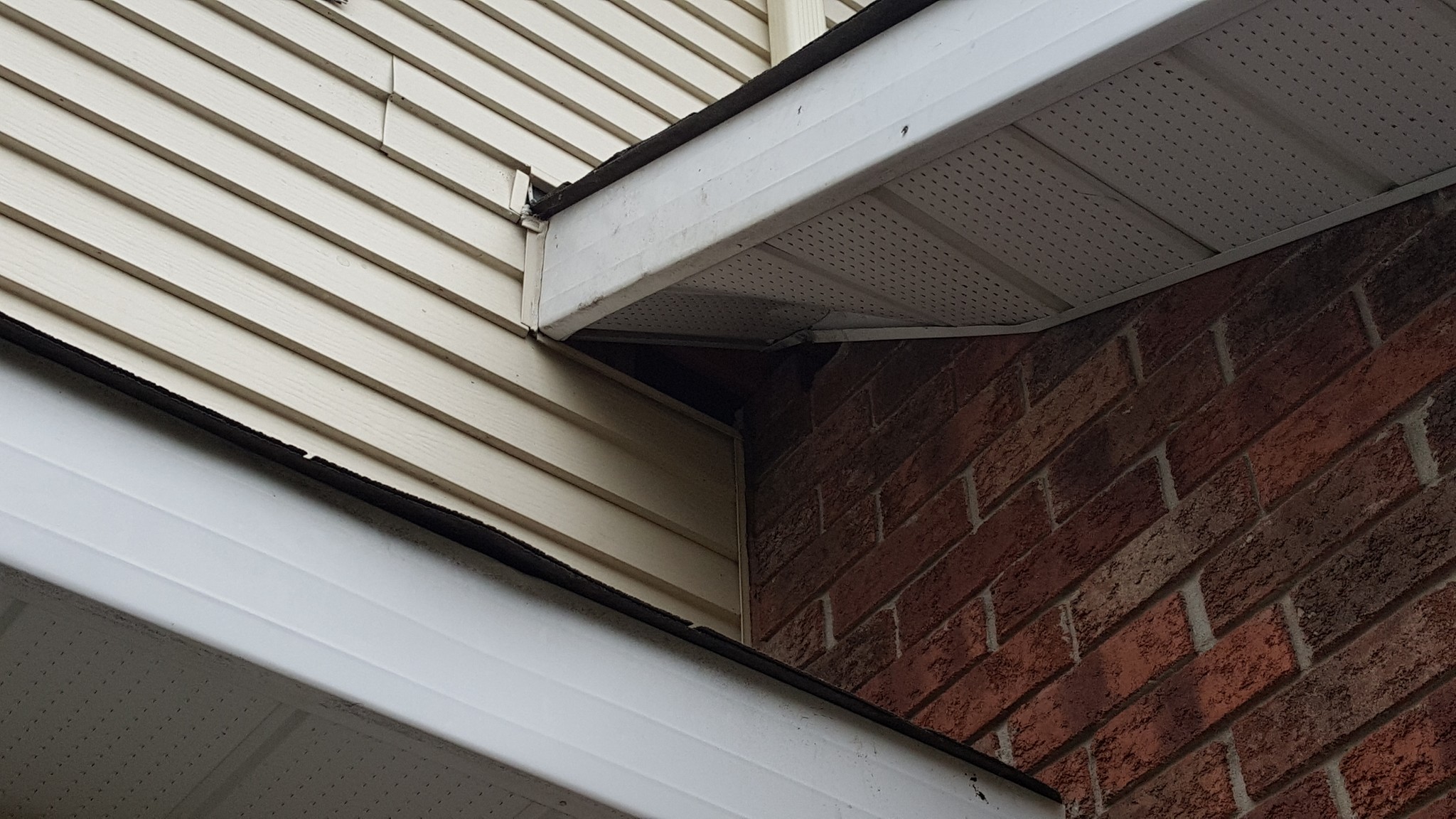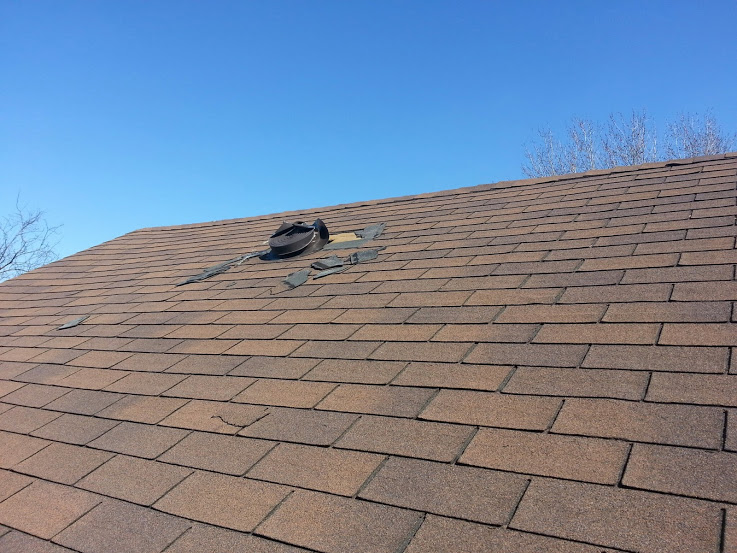Raccoons are nocturnal creatures that look cute and cuddly but are sneaky and sometimes dangerous. Raccoons are not afraid to come close to your home and can oftentimes be seen sorting through outdoor garbage cans for food. It is not uncommon for raccoons to come closer and closer to your home, eventually gaining access to your attic, crawl space, or chimney. Raccoons will live in your home, creating a family, while you are none the wiser. This can be a dangerous situation and one that should be handled by professionals.

Pushed up soffits are a sure sign of raccoon entry.
Discovering the Problem
If you spot a raccoon climbing around your roofline or hear the pitter patter of feet in the attic, it is time to call in the professionals. A raccoon infestation can be quite serious as raccoons can carry diseases including rabies. With professional wildlife removal, a trained expert will arrive at your home and assess the situation. The technician will be able to determine where the raccoon is entering your home and create a plan for removal. Raccoons have special paws that help them climb, so tree limbs as well as your home can create an easy climb which leads the animal accessing your attic space.

Watch out for water damage: Raccoons easily damage roof vents to gain access to attics.
Wildlife technicians will use a humane removal strategy to humanely lure the raccoons out of the attic attic. This involves getting inside the attic and using hands on techniques to force them out through their entry point. To make sure absolutely sure that all raccoons inside the attic are gone, a one-way door may be employed. The raccoon leaves the home in search of food and cannot get back in allowing the animal to relocate itself to one of it’s other den sites in the area.
The attic will need to be assessed for babies during spring a summer. Raccoon babies are removed from the attic by hand and carefully position outside the attic so that they can be reunited with their mother. The mother raccoon them takes the babies one by one to one of her other den sites once we have blocked of her previous entries to the attic,
Cleaning Up
Raccoons can leave behind quite the mess after they have been removed from your attic. The creatures like to chew so you may find portions of wood need to be replaced due to damage. The attic insulation may also need to be replaced as it contains raccoon feces or urine. Feces of raccoons can be infected with roundworm known as Baylisascaris. If the eggs in the feces are ingested by humans it can lead to serious illness. Technicians will be able to recommend options for clearing out the attic as well as cleanup to ensure your home is safe and secure.
Prevention Methods
After you have experienced a bout with raccoons, you will want to avoid it happening again. Prevention methods will help you to keep raccoons at bay. Any and all vulnerable areas of the house’s exterior will need to be secured and reinforced to prevent future intrusions.
Food entices raccoons. Be sure to keep all garbage containers locked up tight so raccoons are unable to gain access to garbage. You may have to remove bird feeders for a time as raccoons will also eat the feed that falls on the ground, which brings them closer to your home.
Motion lights can be added to the home to keep raccoons from approaching as they are nocturnal creatures. The light will turn on once it registers the motion of the raccoon which will trigger the animal to move away. Heavy gage wiring can also be added to any entry points along the roofline of your home which will prevent raccoons from entering via such access points.
When you are in need of raccoon infestation control, contact our team at Skedaddle Humane Wildlife Control. We are trained in several areas of wildlife removal services including raccoon removal.


